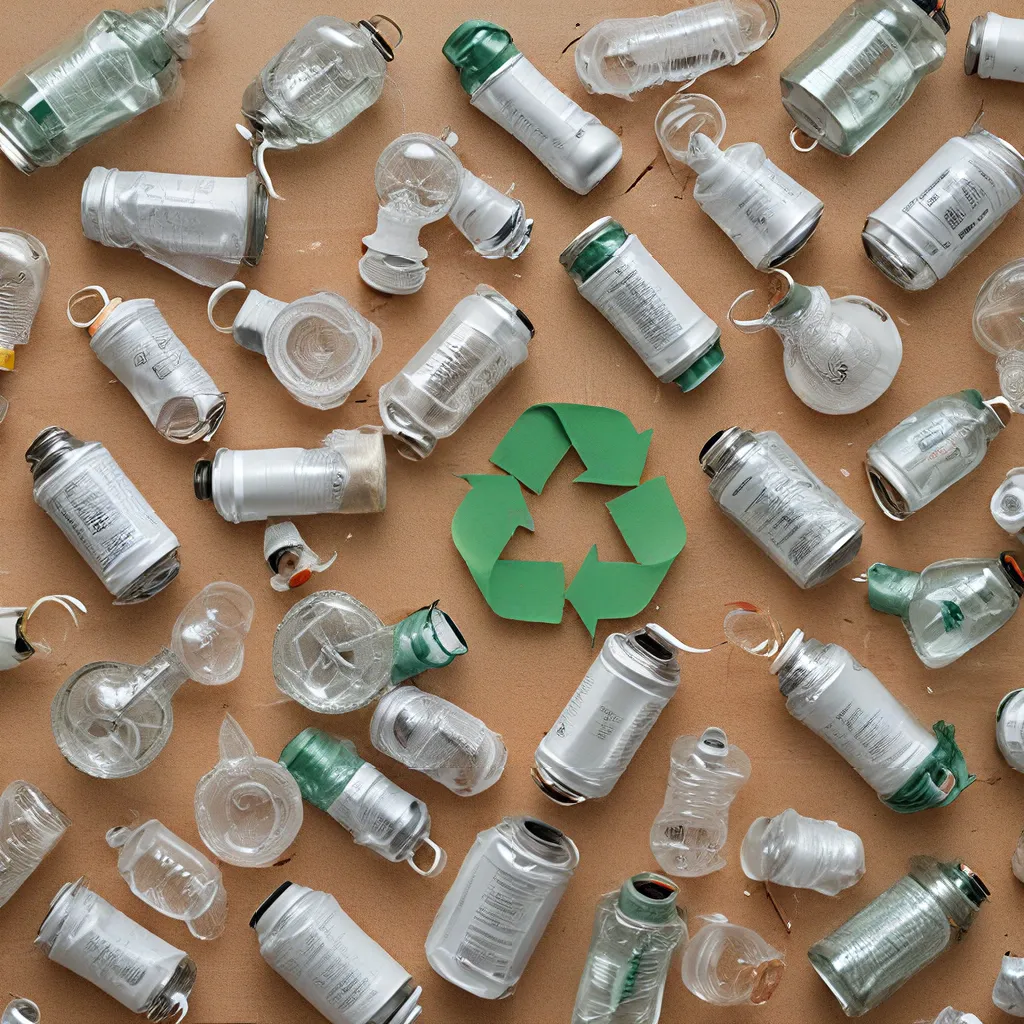
Ah, the humble lithium-ion battery. It powers our phones, laptops, and even electric vehicles. But did you know that these little power packs often end up in the trash, destined for landfills, when their devices are discarded? Well, my friends, it’s time to change that.
Reusing the Irreplaceable
You see, I’ve been on a mission to save these precious batteries from their unfortunate fate. And let me tell you, it’s been quite the adventure. I’ve been scouring my neighborhood, asking friends, and even raiding the local Buy Nothing group to get my hands on as many of these discarded devices as possible.
Why, you ask? Well, it all started when I learned about the sheer number of single-use vape devices flooding the market. These things are packed with perfectly good rechargeable batteries, and yet they’re designed to be tossed once the liquid runs out. Can you believe it? It’s like having a Ferrari and only using it to go to the grocery store.
As I discovered on Instructables, these batteries can be easily salvaged and repurposed for all sorts of DIY projects. From powering microcontrollers to charging your next solar device, the possibilities are endless. And let me tell you, it’s been a real thrill to breathe new life into these little power cells.
Demystifying Lithium-Ion Batteries
Okay, let’s dive a little deeper into the world of lithium-ion batteries. These things are everywhere, and for good reason. They’re lightweight, long-lasting, and can be recharged over and over again. But how do they actually work?
It’s all about the flow of lithium ions. When the battery is discharging, the lithium ions move from the anode to the cathode, creating an electrical current that powers your device. And when you charge it up, the process is reversed – the ions flow back to the anode, ready to be tapped again.
Now, the key to keeping these batteries healthy is managing the charge and discharge cycles. If you overcharge or overdischarge them, you can end up with a dangerous situation on your hands. That’s why it’s crucial to use the right charging equipment and follow the manufacturer’s guidelines.
Harvesting the Hidden Gems
Alright, so now you know the basics. But how do you actually get your hands on these discarded batteries? Well, as I mentioned, I’ve been scouring the streets and reaching out to my community to collect as many vape devices as possible.
As I’ve learned from the folks on Reddit, the process of extracting the batteries can be a bit tricky. You’ve got to be really careful not to short them out or puncture the cells, as that can lead to some serious fire hazards. But with the right tools and a bit of patience, you can safely remove those precious power packs and give them a new lease on life.
Once you’ve got the batteries out, the next step is to get them recharged and ready for your next project. As the Instructables guide showed me, you’ll need a charger circuit with the appropriate settings for the size of the battery. And depending on the quality of the charging chip in the original device, you might need to add some extra protection circuitry to keep those cells safe.
Repurposing the Rejects
Now, you might be wondering, “But what can I actually do with these salvaged batteries?” Well, my friends, the possibilities are endless. From powering DIY electronics projects to creating your own renewable energy systems, these little guys are the unsung heroes of the upcycling world.
Let’s start with the smaller batteries, the ones you might find in those disposable vape pens. As the Instructables guide showed, these 280 and 350 mAh batteries are perfect for wearable gadgets or other portable projects. All you need to do is desolder them from the original circuitry, solder on a new connector, and you’re good to go.
But what about the bigger batteries, the ones from the higher-capacity devices? Well, those can be even more valuable, as they often come with their own built-in charging circuits. As the guide pointed out, the quality of these circuits can vary quite a bit, so you might want to keep the original or ditch it in favor of your own custom setup.
Sustainable Solutions for the Future
Ultimately, the goal here is to keep these valuable resources out of the landfill and put them to good use. And let me tell you, the environmental benefits of upcycling these batteries are nothing to sneeze at.
By recycling and reusing these power packs, we’re not only saving them from a fate worse than death, but we’re also reducing the demand for new battery production. That means fewer resources being extracted from the earth, less energy being used in the manufacturing process, and a smaller carbon footprint overall.
Plus, as the EPA points out, repurposing these batteries can have a ripple effect on our energy infrastructure. By powering our DIY projects and renewable energy systems, we’re reducing the strain on the grid and freeing up resources for other vital uses.
So, my fellow energy-saving enthusiasts, what are you waiting for? Grab those discarded vape devices, get your hands dirty, and let’s start upcycling those lithium-ion batteries! Who knows, you might just spark the next big renewable energy revolution, all from the comfort of your own home.
And remember, if you ever need a little inspiration or guidance, you can always head over to Plug ‘n’ Save Energy Products – they’ve got all the tools and resources you need to make your DIY energy dreams a reality.